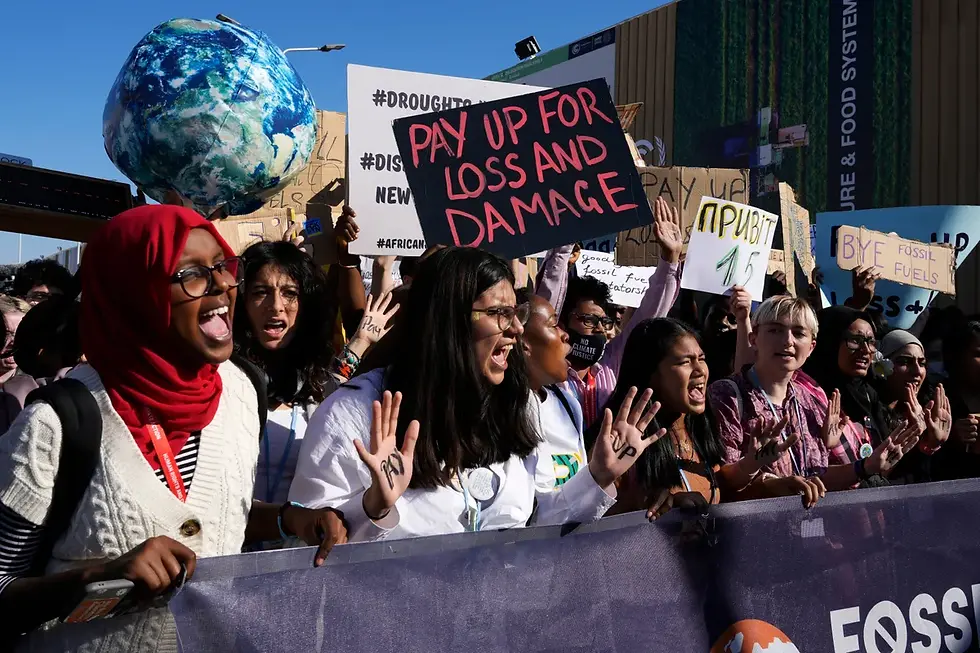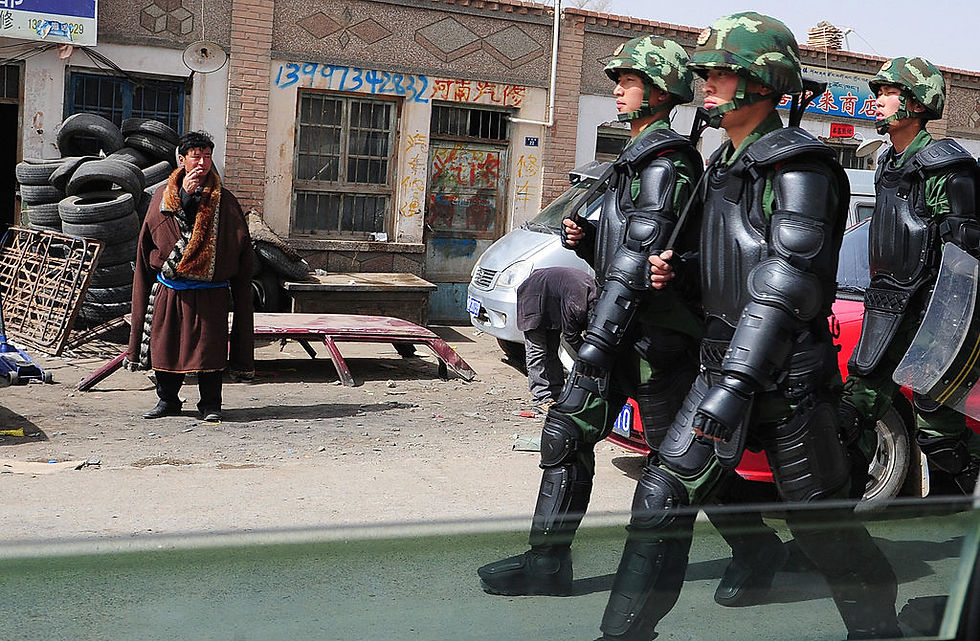Climate Change Accountability: The Loss and Damage Fund
- Akasha Usmani

- Dec 8, 2022
- 4 min read
Updated: Dec 9, 2022
The Conference of the Parties, also known as COP 27, is the 27th United Nations Climate Change Conference, which took place in Sharm El Sheikh, Egypt, in November 2022. This conference is held annually where governments and state heads work together on policies to minimize global temperature rises and adapt to the effects of climate change.

The issue of ‘loss and damage’ was addressed once again at the conference, leading to a historic decision of establishing a loss and damage fund. The principle of ‘loss and damage’ is that the developed countries, which have generated the highest amount of greenhouse gasses and lead most to climate change, should compensate the less developed nations for the damages faced by them from the climate crisis. This is not a new issue, developing countries have been fighting for this for decades.
What Is Loss and Damage?
The negative effects and consequences of climate change on the economy, society and the environment is referred to as loss and damage. These effects can either be an immediate or gradual effect. Some of these effects that countries face are floods, heatwaves, droughts and cyclones.
In 2022 alone, climate change has affected millions of people. The countries that contribute least to the climate crisis are the ones which are more exposed and vulnerable to the drastic effects. For example - In 2020, Pakistan saw the worst floods in their country, it only contributed 1 percent of the world's emissions but the damages the country faced from catastrophic flooding was US $30 billion.
As these calamities occur frequently, climate crises affect the destruction of property, loss of human lives, livelihoods, infrastructure and agricultural lands. This is the loss and damage that the countries face. If the climate crisis continues, the loss and damage will also continue to rise. According to recent estimates, the loss and damage costs for developing nations from the effects of climate change will range from US $290 to $580 billion by 2030 and the figure may rise by 2050 to $1.8 trillion.
A Historic Decision
Though this has been an issue debated for decades the previous Conference of the Parties was not successful in terms of addressing the loss and damage issue. Vanuatu made the first reference in 1991 in climate change negotiations on behalf of the Alliance of Small Island States (AOSIS). It suggested including an insurance system that developed countries should pay under the United Nations Framework Convention on Climate Change (UNFCCC).
The UN Framework Convention on Climate Change (UNFCCC) recognizes that countries have varied responsibilities in the fight against climate change and makes it clear that developed countries must provide both financial and technological assistance to developing countries in order to fight climate change.
However, the term ‘loss and damage’ for a long time had not been officially mentioned and terms like “insurance” were used. At the 11th Conference (COP 11), which took place in 2005, Bangladesh on behalf of the Least Developed Countries negotiating group, requested compensation for the loss and damage brought on by the effects of climate change. For the first time, the word ‘direct compensation’ was used instead of insurance.
At COP 18, “Loss and Damage” was legally incorporated into the UNFCCC structure.
The Warsaw International Mechanism (WIM) was established at the 19th Conference to ask developed nations to provide loss and damage financing and to coordinate the necessary activities to address the issue. This mechanism was brought under the Paris Agreement at
COP 22.
COP 21 marked a crucial turning point when the terms ‘loss and damage’ was added as the third pillar of climate action alongside mitigation and adaptation, though developed nations were still not legally accountable to pay for the damages.
The Group of 77 (G77) and China demanded a Loss and Damage Finance Facility at COP 26 to allocate funds to countries dealing with the worst effects of the climate crisis but their demand was opposed by developed nations like the United States and Switzerland. The countries then compromised, which resulted in a “Glasgow Dialogue”, where the financing “loss and damage” was discussed.
The issue of loss and damage has been a major source of concern for developed countries. The developed countries have previously opposed this and continued to do so until the recent 27th Conference. The main concern of the countries was that making a contribution to such a fund would be seen as accepting responsibility. The developed countries have feared accountability while the developing countries continue to demand compensation and funds for being disproportionately affected by loss and damage brought on by climate change.
The Loss and Damage Fund
The developed nations have long avoided financing ‘loss and damage’, however at COP27, the issue was raised at the center of climate negotiations, resulting in a loss and damage fund. This marks an important achievement for developing countries and is a significant step forward. This fund was established in the face of escalating climate change consequences which could not be ignored any longer.
Although the details of the funds are not discussed and will be worked on at future COPs, There have been no decisions made regarding who should contribute to the fund, where this money would come from, or which countries will benefit.
The fund is expected to assist developing countries that are most vulnerable to the severe effects of climate change. Some countries like Denmark, Belgium, Germany, and Scotland have made financial contributions for loss and damage. The European Union has also committed to the funding. The United Nations Secretary-General, António Guterres has said, “This COP has taken an important step towards justice..”
There is still a lot of work to do. Even while a loss and damage fund has long been needed, its establishment is in itself a win. The road to climate justice for developing nations is a long oneand begins with accountability and responsibility for the mistakes that were made and the long term consequences of those mistakes.








Comments